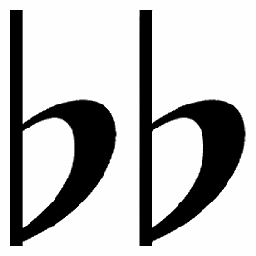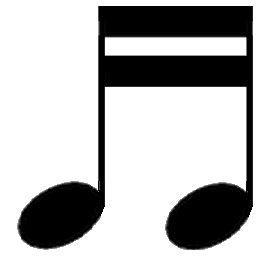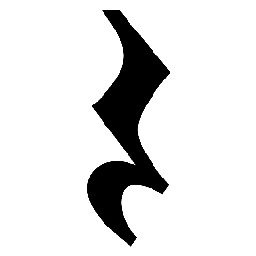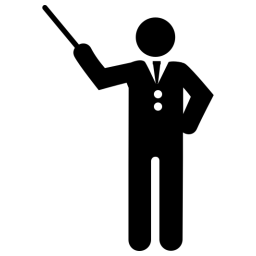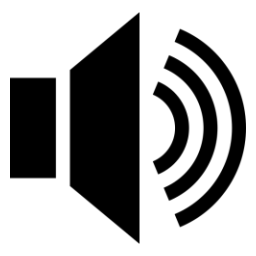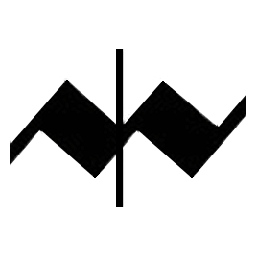The time signature, also called a meter signature, is placed after the clef and indicates the number of beats per measure by the top numeral while the bottom numeral indicates to which notes to apply that value. The example shown shows a meter of 4 beats per measure with the quarter note taking a full beat.
Just as primitive people drummed, sang and danced, the mood of the ancient ruled world was just as anxious to entertain themselves. They were now beginning to realize that they were actually making music and it felt good to be heard. It was the Greeks who first studied and experimented with the science of sound to any depths around the year 500 BC.
The key signature is placed after the time signature indicating the key or pitch range of the scaling system for the appropriate instrument with a series of sharp or flat signs. Depending upon the key, the signature could contain one or several sharp or flat symbols. See also Keys and Chords for key breakdown, assignment, and reference.
We've been singing in churches, synagogues, and temples since the beginning of religion. The musical styles of biblical days was actually Ancient music. It was there but its sound has mostly faded to a mystery to modern man. The people of biblical times drank wine, danced and sang. Music was indeed a happy part of daily life for many during biblical days.
After learning the symbols to starting a new composition, we continue with the symbols that make up the actual music, notes. Notes are placed on the lines and spaces of the staff to tell the performer which tones to play, when to play them, and how long each one lasts. How long a note's sound will last depends upon several factors such as..
Monophonic was the term used to describe a wide variety of fairly organized musical styles from the period after ancient rule until just before any real forms of musical style started appearing about the twelfth or thirteen century. As implies it's earned title, the music of Medieval times was generally quite mono-thematic..
Next we continue with the symbols of silence, rests. Like notes, rests are placed on the lines and spaces of the staff to tell the performer when to remain silent and for how long. How long a rest will last depends upon several factors such as..
An illustrated descriptive listing of directional notation symbols used in musical composing and performance. A composer sometimes needs to instruct the performer how to properly interpret a composition so he uses certain directions to tell the performer how to play the piece.
Dynamics denote the relative intensity of sound & volume in a musical passage or composition. Dynamics are added by the composer as an embellishment to enable the performer to portray a more accurate sense of what the composer intends the composition should sound like. Dynamics are also relative meaning that its use is at the discretion of the performer
Ornamentation is the musical symbols instructing the performer to embellish or add to the actual written notes and instruction. Composers use ornamentation or style marks as a way of expressing themselves through the music by adding emotion.
During the Baroque Period (approx. 1560 to 1780) music became very instrumental and very vocal, not to mention that the dancers wanted to get in on a good thing as well. Now we're about to learn what music is truly for by applying real mathematics coupled withnever before heard emotional style.




